Pop-up card: Selma, Alabama
This pop-up card shows the Edmund Pettus Bridge in Selma, Alabama, USA.
The bridge is 380.4 m long and has 11 spans, one central span is made of steel and the other 10 spans are made of reinforced concrete.
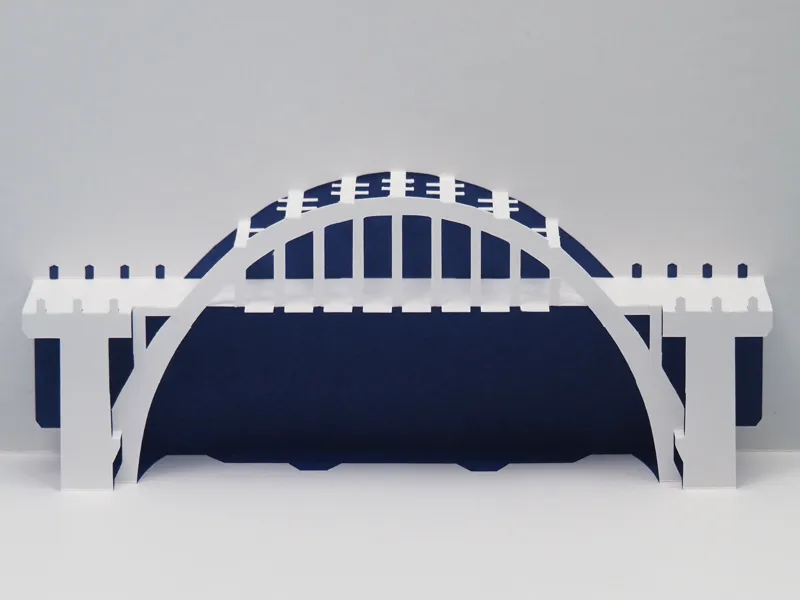
Only one central span was created on this card.
The bridge was completed in 1940. It was named after Edmund Pettus (1821-1907) from Alabama, who served as a senator from 1897 to 1907.
The bridge would become known as the site of the ‘Bloody Sunday’ incident in March 1965.
In the United States, the Civil Rights Act of 1964 was passed. The law was supposed to guarantee blacks the right to vote and prohibit discrimination on the basis of race, place of origin and other factors.
However, various obstructions were made when blacks tried to register to vote in various parts of the country. In Selma, only about 2% of blacks were able to register as voters.
In February 1965, a young black man was shot dead by a police officer while demonstrating for greater voting rights in Selma. A march from Selma to the state capital, Montgomery, was planned to protest this.
On 7 March, 500 protesters crossed the Pettus Bridge, where police officers were waiting on the other side of the bridge.
The police used tear gas and clubbed not only the participants but also women and children along the roadside, resulting in numerous injuries.
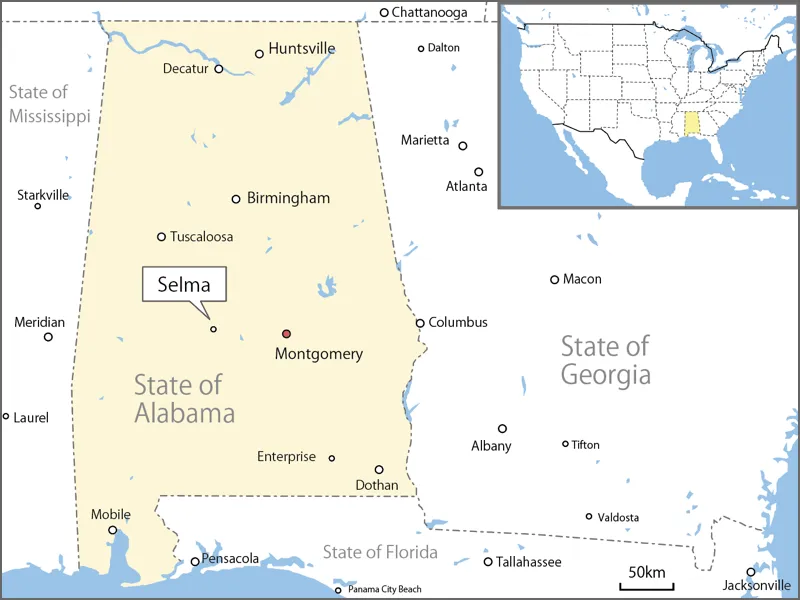
The scene was televised and pictures appeared in newspapers and magazines, sparking support for the voting rights movement in Selma. Condemnation came from pastors, governors, state legislatures and trade unions from all over the country. There were protests in many places, including demonstrations attended by 10,000 people in Detroit and 15,000 in New York.
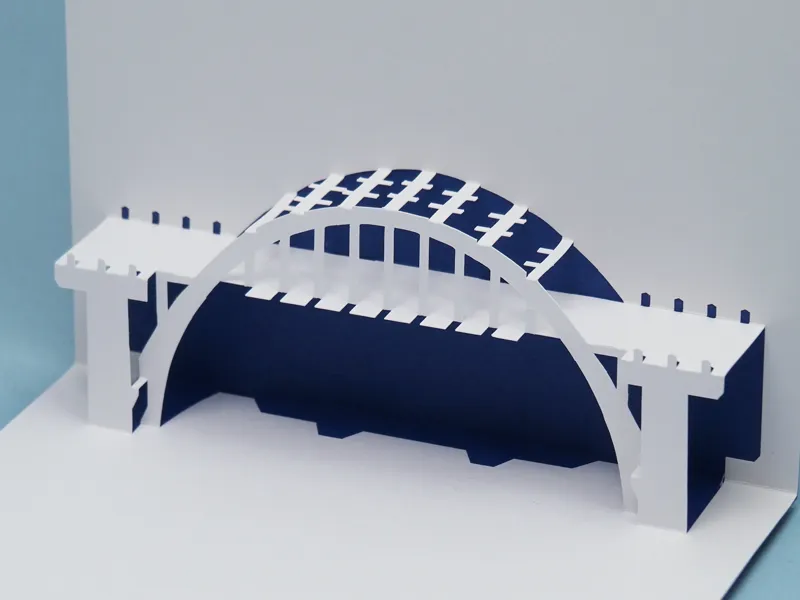
A second march two days later was cut short after a federal court issued an injunction, but a third march took place on 21 March.
This time, 3,200 people travelled to Montgomery, arriving on 24 March. The demonstration at the Alabama State Capitol the next day was attended by 25,000 people.
Shortly afterwards, the Voting Rights Act was passed by Congress and signed into effect by President Johnson on 6 August.
Now for the second pop-up card.
This card was made using the Brown Chapel A.M.E. Church as a model.
A.M.E. Church stands for African Methodist Episcopal Church.
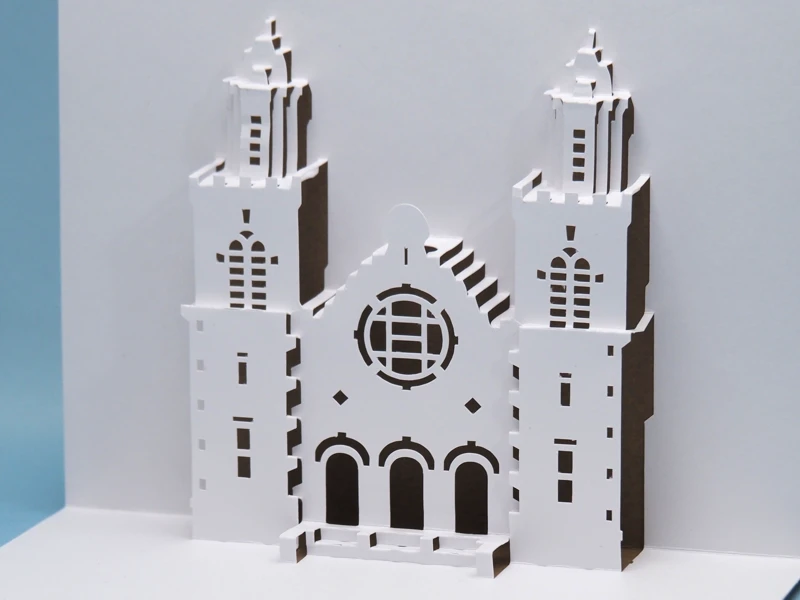
This church is where the civil rights rallies took place and was the starting point for the Selma to Montgomery march described above.
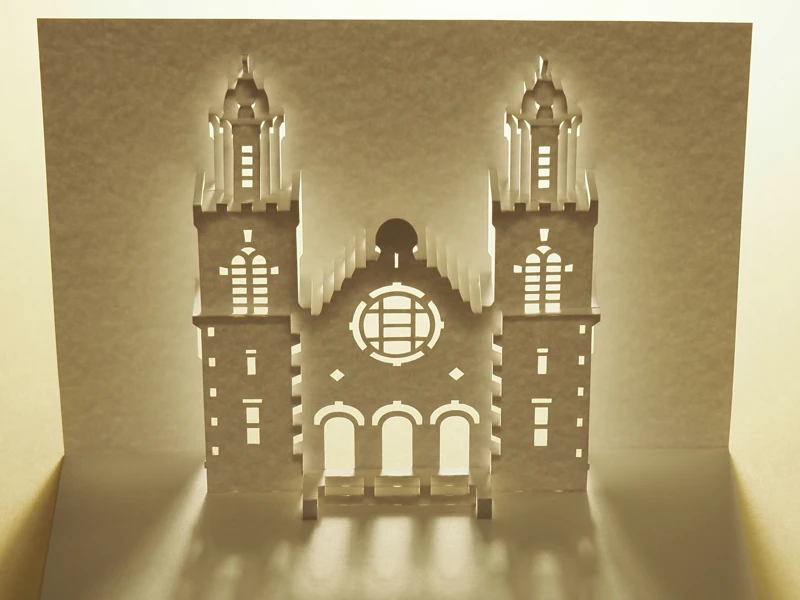
The current building was built in 1908 and was listed as a State of Alabama and National Historic Landmark in 1976 and 1982, respectively.
However, in recent years it has developed leaks and damage, and in 2022 the National Trust for Historic Preservation included it on its list of ‘America’s Most Endangered Places’.
Conservation repairs appear to be underway; in the December 2022 street view of Google map, scaffolding had been erected around the church and work was underway. (I have not checked to see if the restoration has been completed.)
Finally, let us return to the topic of Pettas Bridge.
The bridge’s namesake, Edmund Pettus, was a Confederate general and leader of the Alabama KKK. Because of his support for slavery and racism, it has been suggested that the bridge should be renamed.
In recent years, a bill to rename the bridge was introduced in the Alabama State Legislature in April 2022, but it appears to have passed the Senate but not the House.
Alabama had enacted a law in 2017 prohibiting the removal of historic monuments. Some argued that the renaming was in conflict with this law.
In fact, the law was enacted at a time when other cities were discussing the removal of statues of Confederate generals. What to do with Confederate flags, statues and monuments that attempted to maintain slavery seems to be a matter of debate in many places.
At the end of this article, let us return to the topic of Pettas Bridge.
The bridge’s namesake, Edmund Pettus, was a Confederate general and leader of the Alabama KKK. Because of his support for slavery and racism, it has been suggested that the bridge should be renamed.
In recent years, a bill to rename the bridge was introduced in the Alabama State Legislature in April 2022, but it appears to have passed the Senate but not the House.
Alabama had enacted a law in 2017 prohibiting the removal of historic monuments. Some argued that the renaming was in conflict with this law.
In fact, the law was enacted at a time when other cities were discussing the removal of statues of Confederate generals. What to do with Confederate flags, statues and monuments that attempted to maintain slavery seems to be a matter of debate in many places.
[Main website]
* Edmund Pettus Bridge
* Brown Chapel A.M.E. Church
[Reference]
“Global-trotter travel guidebook : Southern United States 2019-20" (Diamond, Inc../2019) (written in Japanese)
“Attempt to change Edmund Pettus Bridge name fails in state session“(SELMA SUN / 2022-04-15)



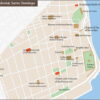
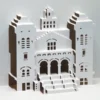

Discussion
New Comments
No comments yet. Be the first one!